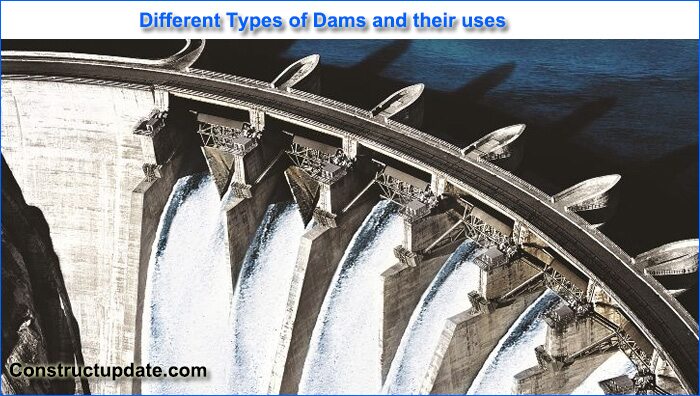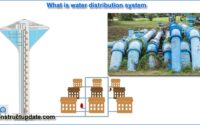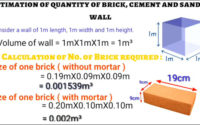Types of Dams | Definitions of Dams
The dam’s vital role makes it a necessary component of a hydroelectric power station. The ability to impound water is made feasible by the civil works infrastructure, which then powers the power plant’s turbines to provide clean electricity. In this article, we will understand about types of dams and their definitions.
Types and definitions of dams
A dam is a man-made barrier that is typically placed across a river to keep water from flowing downstream and create a lake or reservoir. It can be built with concrete or natural elements like as dirt and rock.
There are following various types of dams.

1. Arch Dams
Arch dams are composed of concrete. They are bent in the shape of an arch, with the top facing back toward the sea. An arch is a robust shape designed to withstand the pushing power of the water behind the dam. Arch dams are typically built in narrow, steep-sided valleys. They need solid rock for their foundations and valley sides to withstand the dam’s forces.
2. Buttress Dams
A dam made comprised of a watertight section supported at intervals on the downstream side by a series of buttresses. A buttress dams can have various forms, including a flat slab and a large head buttress. Ambursen Dam. A buttress dam with an upstream section consisting of a relatively thin flat slab, typically reinforced concrete. Multiple arch dams. A buttress dam made consisting of a series of arches for the upstream face.
3. Coffer Dams
Coffer dams are like a temporary building that encloses all or part of the construction area, allowing construction to continue in the dry. A diversion coffer dams directs a stream into a pipe, channel, tunnel, or other waterway.
4. Diversion Dam
A dam erected to shift water from one river or stream to another.
5. Embankment Dam
Any dam made of dug natural or industrial waste materials. Earth dam. An embankment dam in which more than half of the overall volume is made up of compacted earth material, typically smaller than 3 inches in size. Dam filled with hydraulic fluid. An embankment dam is made of dredged materials that are carried and suspended in flowing water. Rockfill dam. An embankment dam in which more than 50% of the overall volume is made up of compacted or dropped cobbles, boulders, rock fragments, or quarried rock greater than 3 inches in size.
6. Gravity Dam
A dam made of concrete or masonry that is stable due to its weight and internal strength. A gravity dam with a hollow interior. A dam made of concrete and/or masonry on the outside but hollow inside, relying on its weight for stability. Crib dam. A gravity dam composed of boxes, cross beams, or gabions filled with soil or rock. Dam made of roller-compacted concrete. A concrete gravity dam is built with dry mix concrete transported by standard construction equipment and compacted by rolling, typically with vibratory rollers.
7. Hydropower Dam
A dam that generates power by turning a turbine based on the difference in water level between the reservoir pool and tailwater elevations.
8. Industrial Waste Dam
An embankment dam is typically erected in stages to provide storage for the disposal of waste products from an industrial activity. The waste products are transported as fine material suspended in water to the reservoir surrounded by the embankment. The embankment may be made of standard materials, but it may also include acceptable waste products. Mine tailings dam. An industrial waste dam is one that collects waste from mining or mineral processing industries.
9. Masonry Dam
Any dam made primarily of stone, brick, or concrete blocks connected with mortar. A dam with simply a masonry facing should not be called a masonry dam. Rubble dam. A dam made of stone that is not formed or coursed.
10. OverflowW Dam
A dam intended to be overtopped.
11. Regulating Dam
A dam that impounds a reservoir and releases water to manage the downstream flow.
12. Saddle Dam
A subsidiary dam of any type built over a saddle or low spot on the reservoir’s border.




